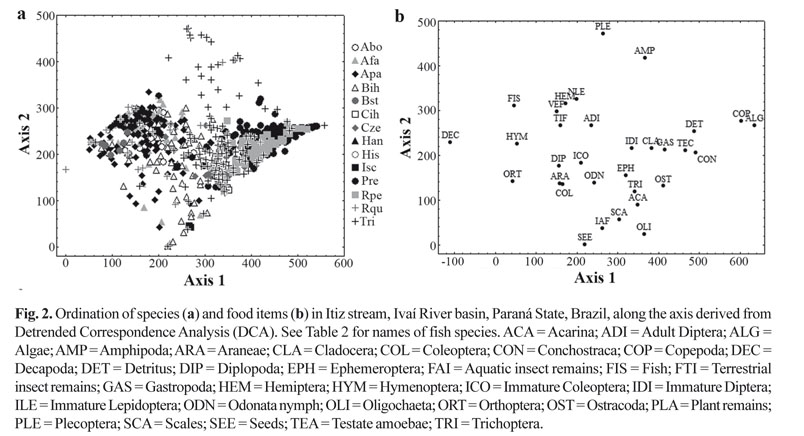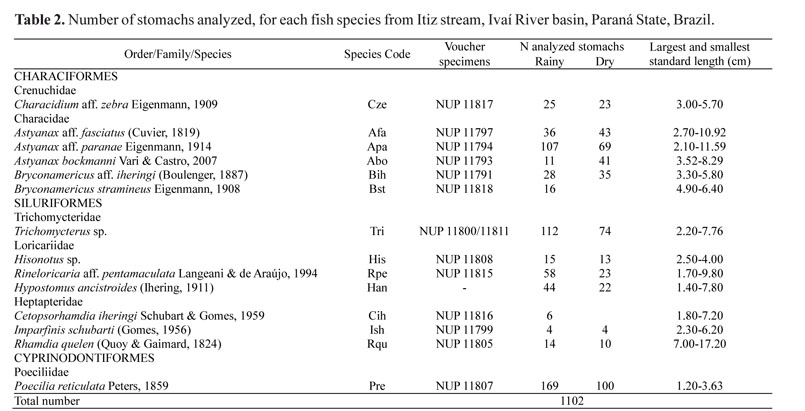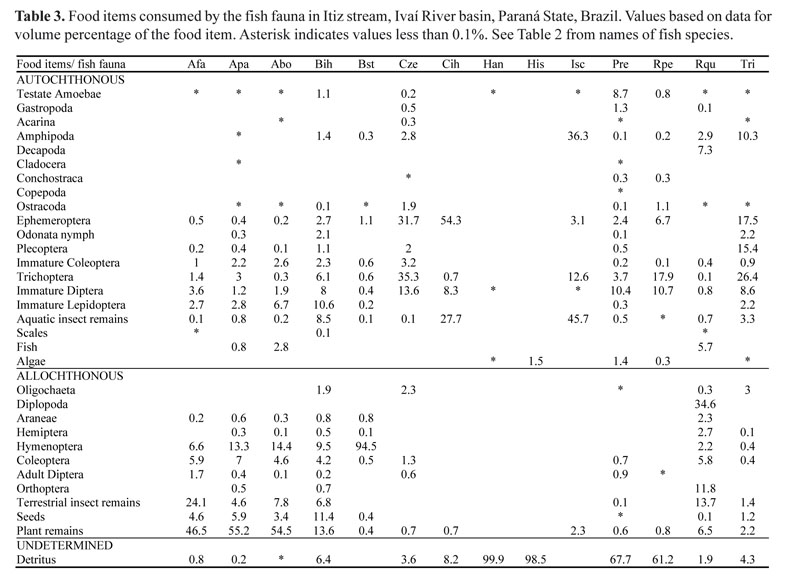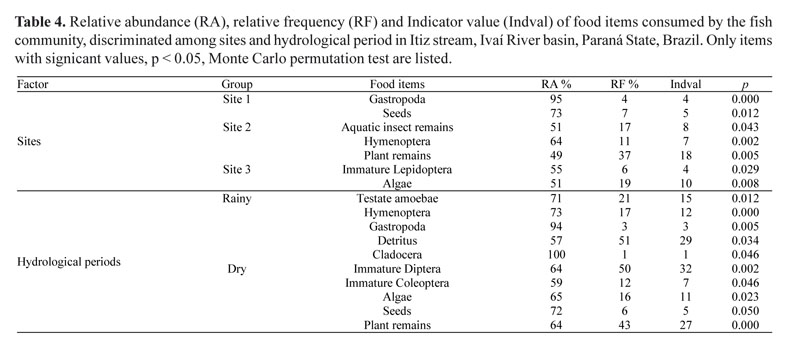This study addressed the feeding ecology of fish fauna from a first-order stream located in a rural area. The purposes were to evaluate the influence of interspecific, seasonal and spatial factors on the diet, examine the dietary overlap, and determine the predominant food sources. Sampling was conducted in December 2007, September 2008, and March 2009, in three 50-m stretches of Itiz stream (upstream, intermediate, and downstream), through electrofishing. A total of 1,102 stomach contents were analyzed from 14 species, by the volumetric method. In general, allochthonous resources were predominant in the diets. Astyanax aff. fasciatus, Astyanax aff. paranae, Astyanax bockmanni, and Bryconamericus aff. iheringi consumed a higher proportion of plant remains, and Bryconamericus stramineus consumed predominantly Hymenoptera. The diets of Cetopsorhamdia iheringi, Characidium aff. zebra, Imparfinis schubarti, and Trichomycterus sp. consisted of aquatic insects, especially immature forms of Trichoptera, Ephemeroptera, Plecoptera, and Diptera. Hypostomus ancistroides, Hisonotus sp., Poecilia reticulata, and Rineloricaria aff. pentamaculata exploited mainly detritus, while Rhamdia quelen used a variety of items, predominantly terrestrial insects. Detrended Correspondence Analysis (DCA) showed a clear distinction among the species, with different morphology and feeding tactics. The Multi-Response Permutation Procedure (MRPP) supported this differentiation, and also indicated significant spatial and temporal variations in the dietary composition; the Indicator Value Method (IndVal) indicated the main items that contributed to these differences. The diet overlap among species was low (< 0.4) to around 78% of pairs, and the mean value did not vary significantly among the sites or between hydrological periods within each site. According to the null model of Pianka’s index, the values for dietary overlap were significantly higher than expected at random, showing evidence of resource sharing. This was related to the availability of allochthonous resources, highlighting the importance of riparian vegetation as a source of these resources for maintaining the fish fauna of the stream.
Allochthonous resources; Diet; Fish fauna; Trophic segregation; Riparian vegetation










